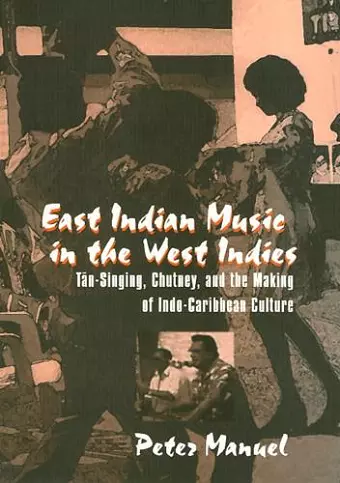East Indian Music
Format:Set / collection
Publisher:Temple University Press,U.S.
Currently unavailable, our supplier has not provided us a restock date
This set / collection is available in another edition too:
- Hardback£86.00(9781566397629)

An introduction to the music of Indo-Caribbean culture
Documents the social and cultural development of a people "without history," a people who have sometimes been dismissed as foreigners who merely perpetuate the culture of the homeland rather than becoming "truly" Caribbean. This book examines the distinctiveness of traditional Indo-Caribbean musical culture.Trinidadian sitarist, composer, and music authority Mangal Patasar once remarked and tan-singing, \u0022You take a capsule from India, leave it here for a hundred years, and this is what you get.\u0022 Patasar was referring to what may be the most sophisticated and distinctive art form cultivated among the one and a half million East Indians whose ancestors migrated as indentured laborers from colonial India to the West Indies between 1845 and 1917. Known in Trinidad and Guyana as \u0022tan-singing\u0022 or \u0022local-classical music\u0022 and in Suriname as \u0022baithak gana\u0022 (\u0022sitting music\u0022), tan-singing has evolved in to a unique idiom, embodying the rich poetic and musical heritage brought from India as modified by a diaspora group largely cut off from its ancestral homeland. In recent decades, however, tan-singing has been declining, regarded as quaint and crude by younger generations raised on MTV, Hindi film music, and disco. At the same time, Indo-Caribbeans have been participating in their countries' economic, political, and cultural lives to a far greater extent than previously. Accompanying this participation has been a lively cultural revival, encompassing both an enhanced assertion of Indianness and a spirit of innovative syncretism. One of the most well-known products of this process is chutney, a dynamic music and dance phenomenon that is simultaneously a folk revival and a pop hybrid. In Trinidad, it has also been the vehicle for a controversial form of female empowerment and an agent of a new, more inclusive, conception of national identity. Thus, East Indian Music in the West Indies is a portrait of a diaspora community in motion. It documents the social and cultural development of a people \u0022without history,\u0022 a people who have sometimes been dismissed as foreigners who merely perpetuate the culture of the homeland rather than becoming \u0022truly\u0022 Caribbean. Professor Manuel shows how inaccurate this characterization is. On the one hand, in the form of tan-singing, it examines the distinctiveness of traditional Indo-Caribbean musical culture. On the other, in the form of chutney, it examines the new...
"This is excellent musical, cultural and political analysis. It charts the fascinating re-configuration of Indian practices and terms that is 'tan-singing' and articulates the complex significance of the licentious 'chutney' in a fast-changing, multi-cultural society in which the Indian contingent is on the rise, and women want liberation. It is indeed a worthy book." -Dr. Edward O. Henry, Professor of Anthropology, San Diego State University, and author of Chant the Names of God: Music and Culture in Bhojpuri-Speaking India "Manuel has produced a timely and relevant scholarly contribution to the growing body of literature on diaspora cultures... His expertise in both Indian and Caribbean music makes him the ideal person to undertake such a task... The work is richly detailed with information on the historical development and modern dynamics of Indo-Caribbean musical genres. Manuel not only describes the empirical facts pertaining to his topic but also provides a multi-layered interpretive analysis of his findings... I recommend it wholeheartedly." -Frank J. Korom, Assistant Professor of Religion and Anthropology at Boston University, and author or editor of five books, most recently Tibetan Culture in the Diaspora
ISBN: 9781566397636
Dimensions: 254mm x 178mm x 18mm
Weight: unknown
252 pages